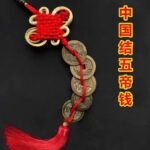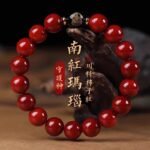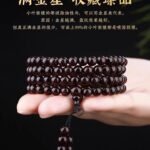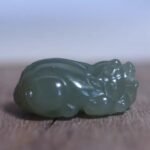While many jade lovers are familiar with Hetian jade from Xinjiang, Qinghai, or even Russia (see our friendly guide on how to tell them apart 🧭), there’s one variety that often flies under the radar — and often for good reason.
Let’s talk about Han Jade (韩料) — the low-key cousin in the Hetian jade family. Often misunderstood, frequently misrepresented, and sometimes downright deceptive, Han Jade is worth knowing not because it’s great, but because you need to avoid it.

🧱 What Is Han Jade and Where Does It Come From?
Han jade isn’t from South Korea, despite the name. It’s a trade term in the jade market, often used to describe low-grade jade that’s:
- Yellowish or greenish in color
- Coarse in texture
- Lacking in both oiliness and luster
It’s usually sold cheap, and for good reason.
❗️Important: Many dishonest sellers will pass off Han jade as “Qinghai jade” or even “Russian nephrite”. Learn how to spot common fakes in our guide:
👉 How to Spot Fake Hetian Jade (5 types)
🧪 The 3 Major Characteristics of Han Jade
1. 🟡 Color
Most Han jade appears in pale yellow, yellow-green, or grayish tones. These colors are not typical of high-quality Hetian jade. If a piece strikes you as “too light” or “too dull”, be alert.
2. 🧊 Structure
Han jade has a porridge-like internal structure. Think boiled sorghum: coarse, grainy, and loosely packed. This makes it easily distinguishable from the dense, even texture of real Hetian jade.
Want a visual comparison? Check out The 3 Faces of Beauty: How Hetian Jade Gets Its Shine to see how real jade achieves its glow.
3. 🕯 Surface Luster
Han jade lacks that famous “oily glow” we associate with quality jade. Instead, it has a waxy sheen, like dried-out candle wax. If it looks like old plastic, it’s likely Han jade.
⚖️ Han Jade vs. Real Hetian Jade
Let’s compare Han jade to other known varieties:
| Type | Color | Texture | Luster | Market Value |
|---|---|---|---|---|
| Xinjiang Hetian | Creamy white to pale yellow | Extremely fine | Oily, soft glow | 💎 High |
| Russian Jade | Vivid spinach green | Compact, fibrous | Glassy or smooth | 💎 High |
| Qinghai Jade | Light and translucent | Watery but smooth | Less oily | 🔹 Medium |
| Han Jade | Pale yellow-green, grayish | Coarse, grainy | Waxy | 🪙 Low |
Curious why Taoists loved real Hetian jade for centuries? Read: What Is Hetian Jade and Why Taoists Revere It?
🚫 Should You Buy Han Jade?
Short answer: No — unless it’s dirt cheap and only for decorative use.
Han jade is often turned into:
- Cheap ornaments
- Inexpensive bangles
- Buttons or costume decorations
Because of its dull appearance, it rarely holds long-term value.
🎯 Pro Tip: Learn the 3 biggest mistakes beginners make when buying jade — and why Han jade often plays a part in them.
✅ When Might Han Jade Be Acceptable?
If you’re looking for a simple bangle that looks decent from afar and you’re on a tight budget, Han jade might do. Once polished into a bracelet and worn from a distance, its flaws are less visible. But again — don’t overpay.
🔍 How Han Jade Is Often Misrepresented
Han jade is often falsely marketed as:
- “Light Russian jade”
- “Qinghai nephrite”
- “Affordable Hetian white jade”
Always ask:
- Where was it sourced?
- Is there lab testing?
- Can you see internal structure photos under light?
✅ Learn more about jade testing and visual clues in our external guide from the Gemological Institute of America (GIA)
💬 Final Thoughts
Han jade might be part of the broader Hetian jade conversation, but it’s not something we recommend collecting unless you’re experimenting or decorating on a shoestring. Instead, invest your money in quality pieces that honor the spirit of jade.
If jade is a way of life to you — as it was for ancient sages — then honor it by choosing wisely. Read why in our feature:
👉 Hetian Jade and Chinese Philosophy: Why Jade Isn’t Just a Stone — It’s a Way of Life



